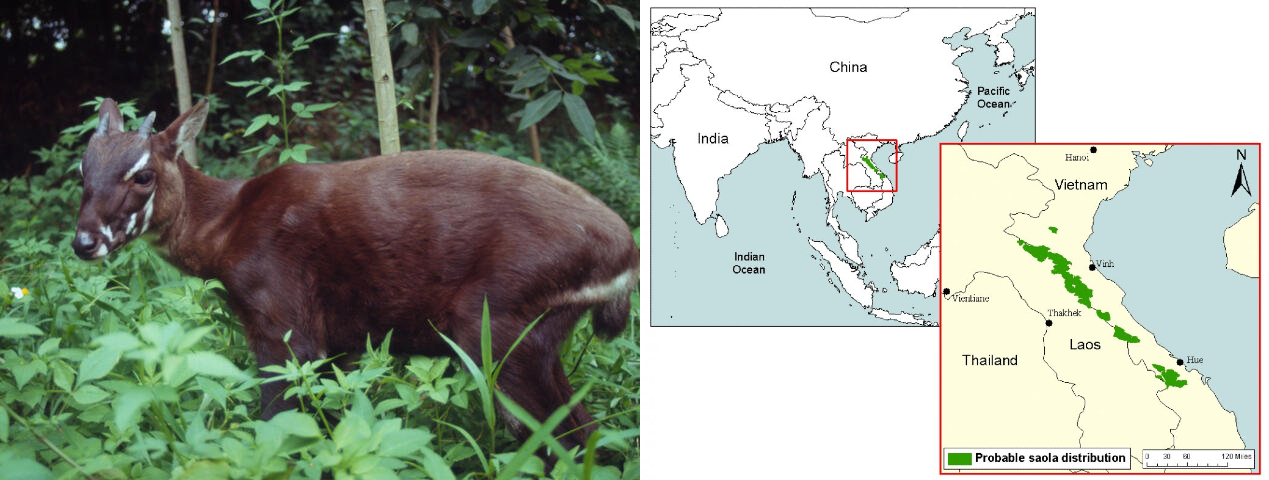Saola | 12 May 2025
Scientists have mapped the genome of the Saola (Pseudoryx nghetinhensis) to aid conservation and found that the species split into two populations 5,000 to 20,000 years ago, coinciding with habitat changes during and after the Last Glacial Maximum (about 20,000 years ago). Agricultural expansion in Vietnam further isolated the populations.Saola:
- Saola: Often called the "Asian unicorn," it is the rarest large land mammal and belongs to the bovid genus. It has a dark, antelope-like body, soft fur, white facial markings, and long parallel horns present in both sexes.
- Its name, "Saola," in Lao means "spinning wheel posts," referencing the shape of its horns.
- Habitat and Survival Threats: The saola is found in the misty highland forests of the Annamite mountain range between Vietnam and Laos.
- It is classified as Critically Endangered (IUCN Status) and is primarily threatened by habitat loss, poaching, and indiscriminate snaring.
- Behavior: Saola are diurnal (active during daylight hours) and are herbivores (folivores).
- They are mostly solitary, although small groups of 2–3 individuals have been observed. Males are territorial and mark their territory by rubbing secretions from their maxillary glands on rocks and vegetation.
- Reproduction: Females give birth to a single calf after a gestation period of 7–8 months. The saola's lifespan is estimated to be 8–11 years in the wild.
| Read More: Bishnoi, Blackbuck and Chinkara |

